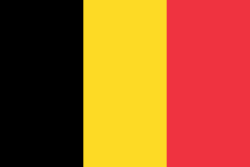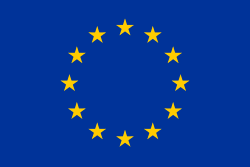Alliansen för europeiska nationella rörelser
| Europeiskt parti Alliansen för europeiska nationella rörelser | |
| Förkortning | AENM |
|---|---|
| Partiledare | Béla Kovács |
| Grundat | 2009 |
| Politisk ideologi | Ultranationalism Euroskepticism |
| Politisk position | Extremhöger[1] |
| Politisk grupp i Europaparlamentet | Grupplösa |
| Europaparlamentet | |
| Mandat | 3 / 751 |
| Europeiska rådet | |
| Mandat | 0 / 27 |
| Europeiska kommissionen | |
| Mandat | 0 / 27 |
| Webbplats | |
| aemn.eu | |
Alliansen för europeiska nationella rörelser (AENM) är ett högerextremt[1] europeiskt parti för ett flertal nationalistiska partier i Europa. Partiet grundades som en fortsättning på nätverket Euronat, där flera av AENM:s medlemspartiet tidigare ingått.[2] Bland medlemmarna finns Front National i Belgien, Jobbik i Ungern och British National Party i Storbritannien.[1] Tidigare ingick även franska Front National och svenska Nationaldemokraterna.[2]
Partiet erhöll officiellt status som europeiskt parti den 12 januari 2018.[3] Partiet förlorade dock sin status som europeiskt parti i augusti 2018.[4]
Medlemspartier
| Parti | Förk. | Stat | MEPs | Inhemska parlamentsledamöter |
|---|---|---|---|---|
| Front National | FN | 0 | 0 | |
| Rörelsen för ett bättre Ungern | Jobbik | 3 | 23 | |
| Fiamma Tricolore | FT | 0 | 0 | |
| Nationella förnyelsepartiet | PNR | 0 | 0 | |
| Republikanska Sociala Rörelsen | MSR | 0 | 0 | |
| British National Party | BNP | 0 | 0 | |
| Allukrainska unionen | Svoboda | 0 | 37 |
Referenser
Noter
- ^ [a b c] ”Svoboda-ideolog kallar förintelsen en guldålder”. Expo. http://expo.se/2012/svoboda-ideolog-kallar-forintelsen-en-guldalder_5421.html. Läst 28 december 2014.
- ^ [a b] ”Jobbik, AENM, and the Nationalist Alternative Model to European Integration” (på engelska) (pdf). nicholasnicoletti.com. Arkiverad från originalet den 4 oktober 2015. https://web.archive.org/web/20151004130135/http://nicholasnicoletti.com/EU%20Conference/Paper%20Submissions/Bennett,%20Stevem%20-%20Neuropa%202.0.pdf. Läst 3 oktober 2015.
- ^ [1]
- ^ [2]
| |||||||||||
| EU-portalen – temasidan för Europeiska unionen på svenskspråkiga Wikipedia. |
Media som används på denna webbplats
The civil ensign and flag of Belgium. It is identical to Image:Flag of Belgium.svg except that it has a 2:3 ratio, instead of 13:15.
Flag of Portugal, created by Columbano Bordalo Pinheiro (1857–1929), officially adopted by Portuguese government in June 30th 1911 (in use since about November 1910). Color shades matching the RGB values officially reccomended here. (PMS values should be used for direct ink or textile; CMYK for 4-color offset printing on paper; this is an image for screen display, RGB should be used.)
The Flag of Europe is the flag and emblem of the European Union (EU) and Council of Europe (CoE). It consists of a circle of 12 golden (yellow) stars on a blue background. It was created in 1955 by the CoE and adopted by the EU, then the European Communities, in the 1980s.
The CoE and EU are distinct in membership and nature. The CoE is a 47-member international organisation dealing with human rights and rule of law, while the EU is a quasi-federal union of 27 states focused on economic integration and political cooperation. Today, the flag is mostly associated with the latter.
It was the intention of the CoE that the flag should come to represent Europe as a whole, and since its adoption the membership of the CoE covers nearly the entire continent. This is why the EU adopted the same flag. The flag has been used to represent Europe in sporting events and as a pro-democracy banner outside the Union.






